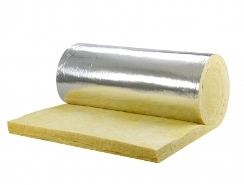 As we approach the coldest part of winter, many homeowners are preparing for the highest energy bills of the year. Unless you heat your home with a wood-burning stove, chances are that insulation may be on your mind. But regardless of how important a well-insulated home is to heating costs, it is equally as important in protecting the home from high cooling bills during the summer months. And as if that isn't enough, properly insulated homes are protected against rot, decay and mold.
As we approach the coldest part of winter, many homeowners are preparing for the highest energy bills of the year. Unless you heat your home with a wood-burning stove, chances are that insulation may be on your mind. But regardless of how important a well-insulated home is to heating costs, it is equally as important in protecting the home from high cooling bills during the summer months. And as if that isn't enough, properly insulated homes are protected against rot, decay and mold.
While many eco-friendly homeowners have complained about the use of standard insulation products, prolonging the life span of an old house is far more ecologically sound than building a new one. According to a Planet Green article on TLC.com ("5 Easy Steps to A Well-Insulated House"), there are some very simple and practical ways to improve the insulation of your home.
1. Start with the attic, crawlspace and walls ? In the wintertime, the most important way to insulate your home is in the attic. Since heat rises, it is more likely to escape through the top of the house. The same rule applies when dressing for a cold day: always wear a hat and you won't lose heat through the top of your head. A Colorado Springs home contractor can inspect your attic or crawlspace for leaks and use the right type of insulation. One product that works well in the attic is Tiger Foam Insulation.
2. Windows don't always get much attention when insulating a home, but they are a very important part of the picture. In fact they account for about 25 percent of heat that is lost in the home. Energy panels are the least expensive way to insulate windows, or try some quilted drapes for extra warmth during cold weather months.
3. If you suspect a door is drafty, pick up a weather-stripping kit for under $20 and seal it up. The same method you use for entry doors can be used on storm doors.
4. Make sure your chimney isn't leaking hot air by investing in a better flue damper and a chimney balloon, but don't forget to close off the fireplace. An insulated glass door is a great place to start.
5. Lastly, don't forget the caulking. Surprisingly, warm air can leak out through your electrical outlets and even your plumbing fixtures. A simple treatment of foam insulation and caulking can usually solve these problems, but be sure your home also has enough ventilation. Take the time to speak with a contractor who is familiar with the latest home insulation solutions.
Why add insulation to your home?
Adding insulation in an existing home saves money and improves comfort. Not only will it reduce your heating and cooling costs and likely pay for itself in short order, it will make your home more inviting and livable.
Will insulation make a difference in a newer home?
As a Colorado home improvement specialist, this is a question I am asked frequently. My answer is usually something like this: unless your home was specially constructed for energy efficiency, you can probably reduce your energy bills by adding more insulation. New homes will often develop drafts in strange places after the house has settled.
How do I know if I should add insulation?
To determine whether you should add insulation, first you will need to find out how much you already have and where it is located. This kind of inspection is best conducted by a qualified home energy auditor or contractor. Some companies offer this as a service when installing new doors and windows. Ideally, you will want to have a whole-house energy assessment completed before determining which areas are in need of insulation and sealing.
Keep in mind that just because you live in an older home does not mean you need more insulation. While it's true that many older homes have less insulation than homes built today, it's also likely that the previous owners added more insulation over the years.
Inspecting and Evaluating Your Insulation
A qualified contractor can check the walls, floors and attics near an unheated space such as the garage or basement. Exterior walls can be inspected by using an electrical outlet. First turn the power off to the outlet, then remove the cover and shine a flashlight into the crack around the outlet box. This will show if insulation is there and how thick it is. You might need to pull out some of the insulation to determine which type it is. Repeat this process by checking the outlets on all floors.
Determining Recommended R-Values
When you learn more about the insulation that has been used in your home it will be easier to determine the R-values. These values can be applied to the U.S. Department of Energy's Zip Code Insulation Calculator to figure out the amount of insulation that should be added to achieve maximum energy efficiency. The calculator will provide an estimate of the insulation cost, as well as the rate of return on your home improvement dollars.
Photo Courtesy of John Kasawa / FreeDigitalPhotos.net
Monday, 31 December 2012 06:47
Add comment - Do not provide private personal information or request advice. Please use our Contact Form if you need assistance.
Source: http://www.hearthouse.com/five-easy-ways-to-insulate-your-home.html
oscar winners the artist sacha baron cohen oscars the old curiosity shop jane russell meryl streep martin scorsese
No comments:
Post a Comment
Note: Only a member of this blog may post a comment.